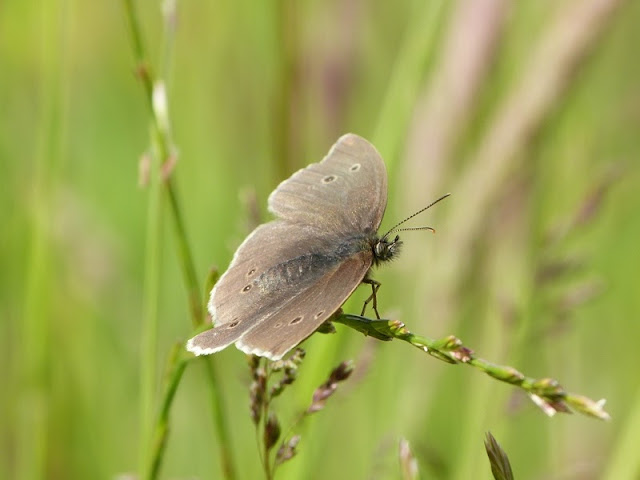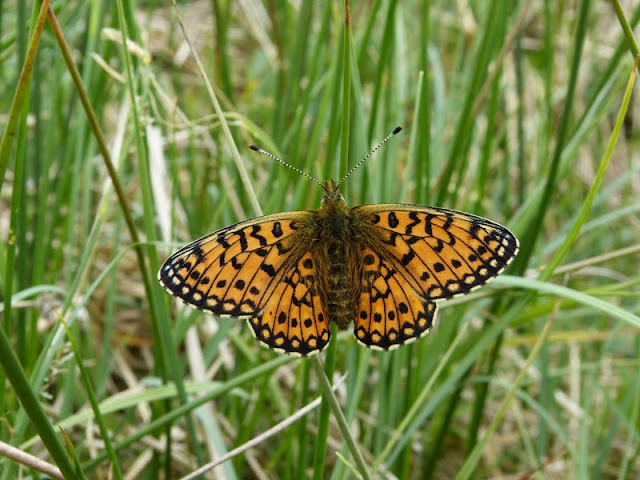I visited my father in the Scottish Borders on Saturday and thought that I should be able to call in to an area where there is a colony of Scotch Argus butterflies, Erebia aethiops, on the way home. Unfortunately, the day turned out to be cloudy and it rained in the early afternoon, so I didn't think I would have a chance to see them. On the other hand I had been told that they are one of the few species to fly in overcast conditions.
Despite the weather, on the way home I thought I should at least have a look at the site that I had been told about. It was 5:30 in the evening, 15 degrees and cloudy, but I thought it was worth a look as I was in the area. I parked the car, crossed a golf course and walked down a track to a grassy area. There was no sign of any butterflies, and I was about to give up when I saw a small dark butterfly fly out of the grass ahead of me. I managed to catch up with it, switched on my camera and then heard it beep and switch off as the battery was flat!
I had another battery in the car, so I ran back and grabbed it. My poor son was waiting for me and now he was going to have to wait even longer. At least on the way back I was able to go straight to the right place. By now it was 6 pm and you normally don't see any butterflied at that time.
However, the Scotch Argus is obviously a hardy soul and over the next 10 or 15 minutes I saw about 30 of them. They seemed very timid and difficult to approach, but I did manage a few pictures. Unfortunately, when they land they tend to drop down into the grass and the cloudy weather made getting a clear picture almost impossible.
These are truly beautiful butterflies. Due to the light conditions the pictures don't do them justice. They are a dark chocolate brown, with bright orange markings containing black ocelli with white pupils. The white pupils really stand out very brightly.
The books give a wingspan of 40mm, but the sub-species occurring here, caledonia, is said to be smaller. Certainly the butterflies I saw seemed smaller than that.
The Scotch Argus occurs in scattered colonies across Scotland and northern England. It also occurs in central Europe.
I will definitely return to this site next year to look for these butterflies. Hopefully, it will be a sunny day and I will have more time to spend watching them.




















































